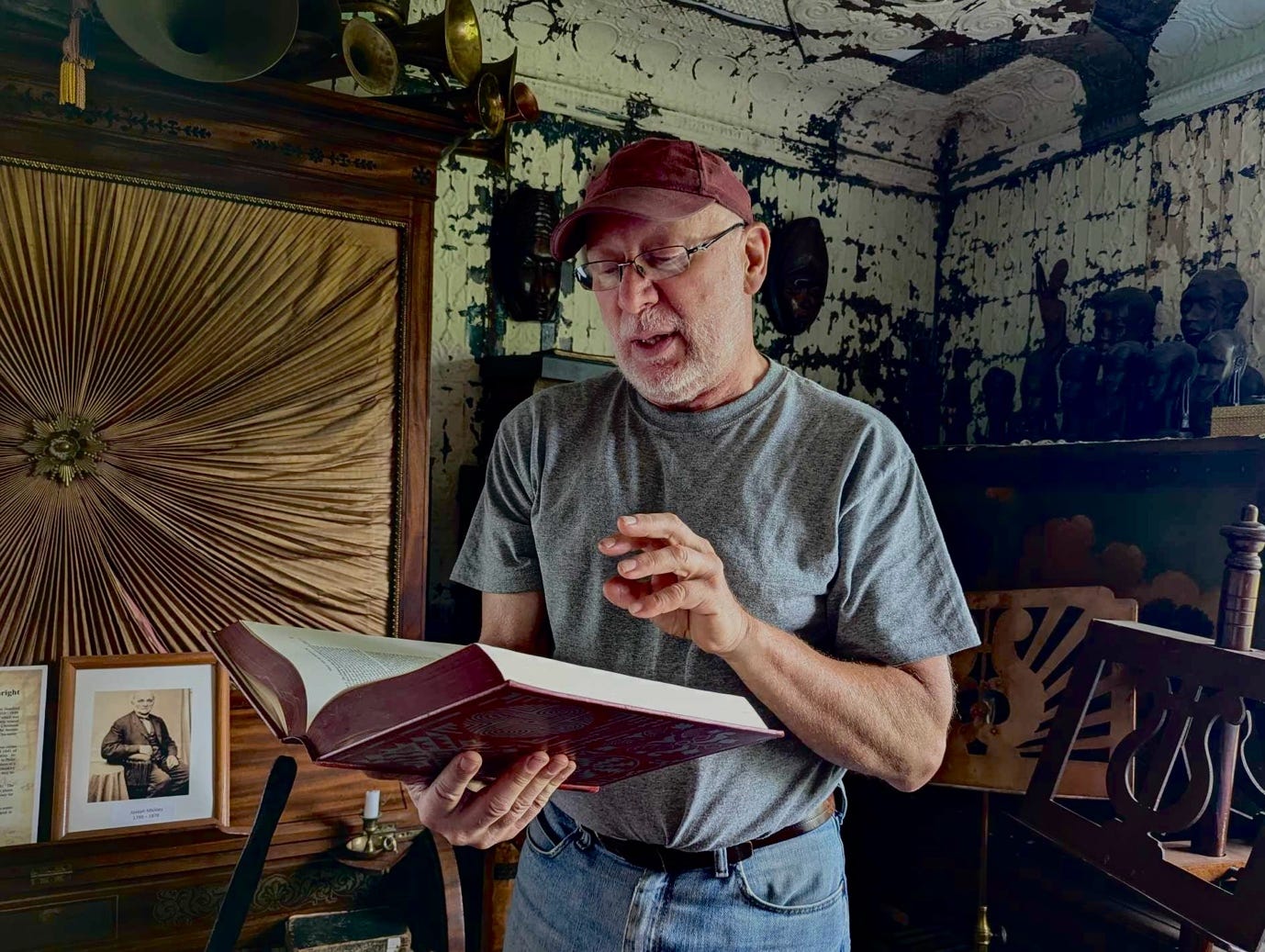There’s not so much left of what Stockholm South Dakota used to be, and that’s just fine. The railroad junction doesn’t do much business, the bank and store have gone and the disused grain store is severely battered, but history lives on in the friendly welcome of the people.
Piano shoppe owner and storyteller Steve Misner is a case in point. With his repository of old pianos, restoration skills, tuner’s ear and river deep mountain high historical knowledge, he regales us with stories of the past…
He opens his demonstration, in the video above, with a Nickelodeon. Back in 1919 it would have cost the owner $400 dollars to buy ($40,000 at today’s prices) and, as the name suggests, a nickel in the slot set it in motion – then 1/20th of the average salary.
Every musical instrument carries a story and one of Steve’s Steinways is quite possibly the first piano to cross the Mississippi, sometime in the 1860s.
[It is said that the Union won the American Civil War ‘with one hand behind its back’ – meaning that the North’s industry and economy was unsurpassable – and so was Steinway’s enterprising push west.]
Fast forward to World War Two and we learn that there were even Victory Vertical Steinways that could be dropped by parachute to grateful troops in need of a morale boost.
Steve sums up a short history of the piano with quick a pithy sentence:
“The piano is an American perfection of a French improvement based on an English adaptation of a German version of an Italian invention.”
Such improvements, like adding sustain pedals and rapid hammer movements, gave composers of the day greater freedom to express the full spectrum of their creativity.
Franz Liszt’s intense emotional virtuosity, for example, was given a sonic boost by the invention of the Chickering full cast iron frame. Before this strengthening Liszt’s expressiveness would bust pianos apart during performances – he was known to drive audience’s wild with his passion, precision and power – hence the coining of the word Lisztomania, long before Beatle Mania, to describe the rock star like adulation he received for his smashing performances.
Check out the recording below as an example of his exuberance.
Hendrix and Townsend eat your heart out!
The stories the instruments reveal need more time to tell, but here’s a cliffhanger to end on…
Could Steve’s Hapsburg era piano, inscribed with a Royal insignia and a female motiff, have been played by Mary Antoinette ?
Answer: If not probable, it is possible!
****
It’s a pleasure to meet people like Steve and it’s great to welcome him along to sub-stack too. Those who wish, can contact him here.
Incidentally, that place where music and memory meet will always spark my writing – so much so that I’m almost tempted to call this sub-stack “Transatlantic Songlines.”
Points to note:
The leading video contains images of musical equipment from Steve’s collection, Brown Earth Church and Codlington County Museum, Watertown. All of the instruments have been in Steve’s hands at some point.
South Dakota also hosts the National Music Museum.














Share this post